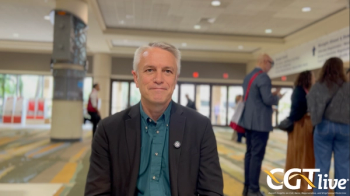
Data from ASGCT Shows Gene Therapy Produces Dopamine in AADC Deficiency
Agilis Biotherapeutics, Inc. has announced that the company's gene therapy for AADC deficiency results in de novo dopamine production and supports durable Improvement in major motor milestones.
Agilis Biotherapeutics, Inc. has announced that multiple abstracts by its collaborators and partners were selected for presentation at the American Society of Gene and Cell Therapy (ASGCT) this week in Chicago.
One of the abstracts, a poster presentation entitled "
The gene therapy is an investigational therapeutic administered as a one-time, low-dose treatment of AAV2-AADC, delivered by targeted micro-dosing to the putamen by an established stereotactic procedure.
The presentation includes data from 25 children with severe AADC deficiency who were treated using a single administration of AGIL-AADC gene therapy delivered bilaterally to the putamen by stereotactic infusion during a single, operative session. Patients received a total dose of either 1.8x1011 vg total of AGIL-AADC (n=21) or 2.4x1011 vg total of AGIL-AADC (n=4).
Of the 25 children given AGIL-AADC, 3 are now more than 7 years post-gene therapy, and 7 are more than 6 years post-gene therapy. Clinical results of the first 18 patients given AGIL-AADC were compared to natural history cohort.
At baseline, ages ranged from 21 months to 8.5 years, and no child had developed full head control, sitting unassisted standing capability, or any major motor milestones consistent with the published natural history cohort of severe AADC patients who never achieve these motor milestones over their lifetime.
In comparison to the natural history cohort, among the 18 patients who received the 1.8x1011 vg total dose of AGIL-AADC, 5/15 gained full head control (p<0.0001), 4/15 gained sitting unassisted (p=0.0004), and one subject achieved standing with support at 2 years. At 5 years, 4/7 gained full head control and sat unassisted (p<0.0001), and 2/7 stood with support (p=0.0054).
Following administration of the gene therapy, patients experienced improvements in head control, sitting unassisted, and standing with support. In regard to ambulatory function, 2 patients are using wheeled walkers, 1 additional patient is able to take steps holding an examiner’s hand, and 1 patient is walking independently. Regarding ambulatory function, 2 patients are using wheeled walkers, 1 additional patient is able to take steps holding an examiner’s hand and 1 patient is walking independently. In general, adverse events (AEs) in the first year after AGIL-AADC administration were associated with overall disease state.
These findings demonstrate that gene therapy with AGIL-AADC has the potential to serve as a therapeutic option for patients with AADC deficiency to achieve and maintain motor milestones.
“We are delighted to witness the progress of this pioneering gene therapy effort and related disease epidemiology for this devastating disease where no approved treatment options are available,” said Mark Pykett, President and CEO of Agilis.
For more rare disease news from ASGCT and related conferences, subscribe to Rare Disease Report’s
Newsletter
Stay at the forefront of cutting-edge science with CGT—your direct line to expert insights, breakthrough data, and real-time coverage of the latest advancements in cell and gene therapy.



































